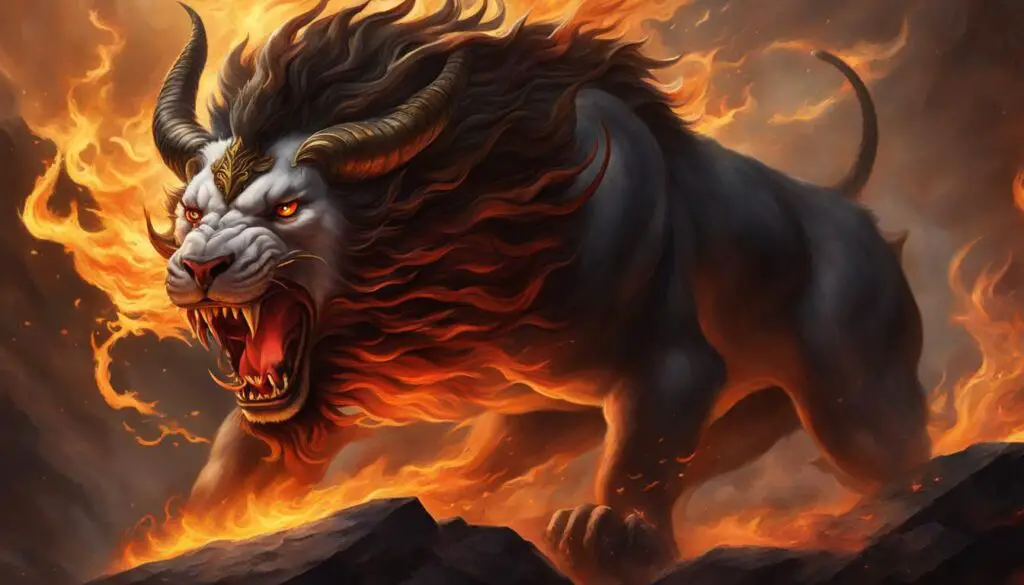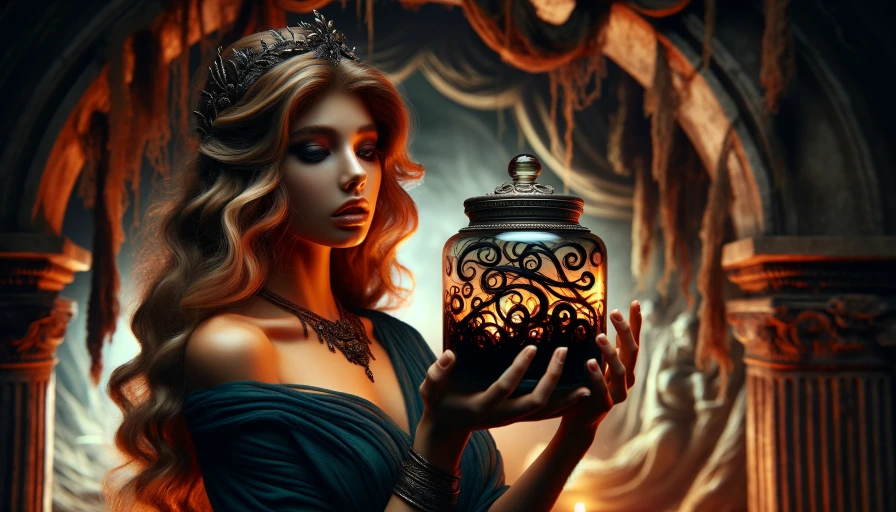The chimera is a well-known female monster in Greek mythology, combining the features of a lion, a goat, and a serpent. This fearsome creature was believed to breathe fire and was considered a bad omen by Greek sailors. Its family background is disputed, with some sources claiming it was raised by a man named Amisodorus, while others say it was the offspring of Echidna, a half-woman half-monster, and the monster Typhon. The chimera’s association with grave misfortune made it a formidable threat.
Throughout Greek folklore and legends, the chimera’s appearance and abilities were the subject of fascination. Its unique anatomy consisted of a lion’s head, a goat’s head on its back, and a serpent for a tail. These different animal traits gave the chimera an amalgamation of strengths, including the strength of a lion, the intelligence of a goat, and the cunning of a snake. It appeared in ancient Greek literature, with Homer mentioning it in his epic poem, the Iliad.
Key Takeaways:
- The chimera is a female monster in Greek mythology, combining the features of a lion, a goat, and a serpent.
- It was believed to breathe fire and was considered a bad omen by Greek sailors.
- The chimera’s family background is disputed, with various accounts attributing different origins to the creature.
- Its appearance and abilities were the subject of fascination, representing a combination of different animal traits.
- The chimera had a significant impact on art, literature, and cultural symbolism throughout history.
The Appearance and Abilities of the Chimera
The chimera is a creature of Greek folklore and a prominent figure in ancient Greek literature. It has a unique and fearsome appearance, with the head of a fire-breathing lion, a goat’s head on its back, and a serpent tail. This combination of different animals gives the chimera a distinct and captivating presence.
In Greek legends, the chimera was believed to possess the strengths and attributes of its constituent animals. It inherited the strength and ferocity of the lion, the intelligence and agility of the goat, and the cunning and slyness of the serpent. This amalgamation of characteristics made the chimera a formidable creature, feared by many.
The chimera’s fire-breathing ability was a defining aspect of its mythology. This fiery breath was often associated with destruction, representing the chimera’s power and the danger it posed to those who crossed its path. The Greeks believed that the volcanic activity in the region of Lycia, in Asia Minor, was caused by the chimera’s fire-breathing abilities.
Ancient Greek literature, such as Homer’s Iliad, featured the chimera as a fearsome antagonist, embodying chaos and danger. Its appearance and abilities made it a captivating subject for storytelling, allowing for imaginative interpretations and creative narratives.
Overall, the chimera’s appearance and abilities in Greek folklore and literature have cemented its status as one of the most intriguing creatures in mythology.
Key points:
- The chimera has a distinct appearance with a lion’s head, a goat’s head on its back, and a serpent tail.
- It inherited the strengths and attributes of these animals, combining the fierce strength of a lion, the intelligence of a goat, and the cunning of a snake.
- The chimera was known for its fire-breathing ability, which symbolized destruction and was believed to be the cause of volcanic activity in Lycia.
- It appeared in ancient Greek literature, showcasing its fearsome nature and its role in stories of chaos and danger.
The Story and Significance of the Chimera
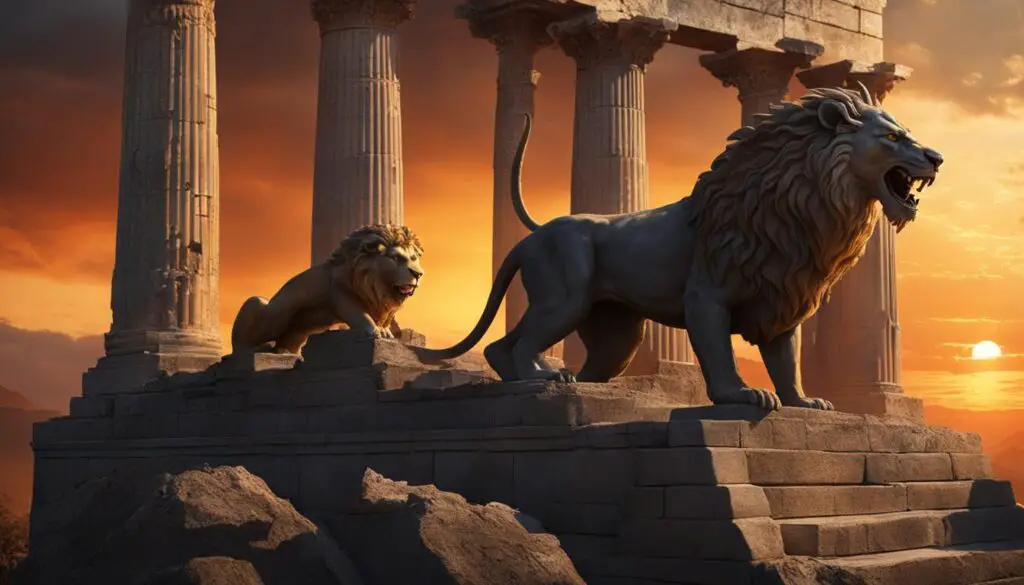
In Greek mythology, the chimera was a dreadful monster associated with other terrifying creatures like the Nemean Lion and the Sphinx. As the offspring of the chimera and its brother Orthrus, it gave birth to equally monstrous creatures. This fearsome creature terrorized the Kingdom of Lycia until the arrival of the Greek exile Bellerophon. King Iobates, who sought to eliminate Bellerophon, sent him on a mission to kill the chimera, believing that the monster was unbeatable. Nevertheless, with the help of the winged horse Pegasus, Bellerophon successfully defeated the chimera. This story not only exemplifies Bellerophon’s bravery but also showcases the formidable challenge of conquering the fearsome chimera.
- The chimera, a dreadful monster in Greek mythology, was associated with other terrifying creatures.
- Believed to have mated with its brother Orthrus, the chimera gave birth to monstrous offspring.
- The chimera was a formidable threat that terrorized the Kingdom of Lycia.
- Bellerophon, a Greek exile, was tasked with defeating the chimera by King Iobates.
- Against all odds, Bellerophon triumphed over the chimera with the assistance of the winged horse Pegasus.
The Etymology and Pronunciation of Chimera
The term “chimera” has its roots in Greek mythology. It is derived from the Greek word “chimaira,” which translates to “she-goat” or “one-year-old animal.” This name reflects the creature’s unique combination of lion, goat, and serpent features. Interestingly, the term “chimera” is related to other Indo-European words used to describe baby livestock.
In English, the pronunciation of “chimera” can vary slightly. It is commonly pronounced as “kahy-MEER-uh” or “KIE-meer-uh.”
So, the etymology of “chimera” takes us back to Greek mythology, and its pronunciation can be interpreted in a couple of ways. Now, let’s explore the locale and origins of the chimera in the next section.
The Locale and Origins of the Chimera
The chimera, a legendary creature in Greek mythology, was said to have lived in the mountains of Lycia, an ancient kingdom located in modern-day Turkey. According to Greek geographer Strabo, the chimera was particularly associated with Mount Cragus in Lycia, where it was believed to dwell. The specific locale of the chimera’s habitat added to its mythological significance and the fear it invoked in the hearts of the ancient Greeks.
The origins of the chimera were believed to trace back to Typhoeus and Echidna, two monstrous beings from Greek mythology. As the offspring of these fearsome creatures, the chimera inherited its formidable nature and striking appearance. The chimera’s presence in Lycia, coupled with its association with specific locations, contributed to the rich tapestry of Greek mythology and the enduring legacy of this mythical beast.
The Appearance and Abilities of the Chimera in Different Cultures
The chimera’s portrayal and capabilities extend beyond Greek mythology and can be found in the folklore of various cultures. In Mesopotamian mythology, chimeras were closely associated with chaos, darkness, and the forces of instability. The chimera’s distinctive physical form, incorporating different animal parts, held symbolic significance representing duality, transgression, and the enigmatic and unfamiliar. Its fire-breathing ability symbolized both destruction and purification, often considered a link to the underworld or afterlife.
The presence of chimeras can also be observed in the mythologies of other civilizations, such as Egypt, India, and China. In these cultures, chimeras symbolized the wonders and fears associated with the natural world. These mythical creatures blurring the boundaries between various species echoed the rich diversity of nature itself.
Egyptian Mythology
In ancient Egyptian mythology, chimeras were known as “sphinxes” or “sekhemty,” depicted as lion-bodied creatures with human heads and falcon wings. The sphinx held significant symbolic meaning, embodying both the protective and destructive powers of the sun god, Ra. It guarded sacred sites and acted as a riddle-giver, challenging passersby to solve its enigma or face dire consequences.
Indian Mythology
In Hindu mythology, chimeras took on the form of hybrid creatures known as “yakshas” or “gandharvas.” Yakshas possessed the characteristics of both humans and animals, acting as guardians of natural resources and ancestral spirits. Gandharvas, on the other hand, were celestial beings known for their exceptional musical abilities and association with the divine realm.
Chinese Mythology
In Chinese mythology, chimeras were commonly referred to as “qiuniu” or “shiju.” These mythical creatures blended features of different animals, such as goats, horses, and dragons. Qiuniu were often depicted as benevolent beings, capable of warding off evil spirits and bringing good fortune. They symbolized the harmony between heaven and earth and were seen as guardians of prosperity.
The chimera’s significance in different cultures speaks to its universal appeal and enduring symbolism. Its portrayal across various mythologies showcases its ability to captivate and fascinate people throughout history, leaving an indelible mark on our collective imagination.
The Symbolism and Allegorical Meaning of the Chimera
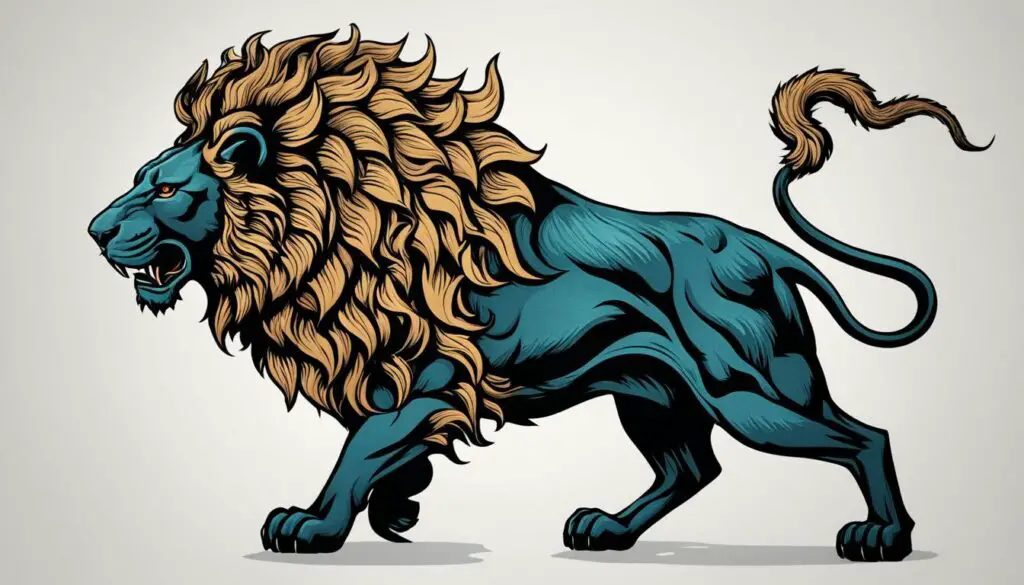
The chimera’s distinctive appearance and abilities have been interpreted symbolically in various ways. Its hybrid form represents duality and the mixing of categories, challenging natural boundaries. The fire-breathing ability symbolizes destruction, purification, and a connection to the underworld or afterlife.
The chimera has been associated with themes of untamed wilderness, greed, excess, and sinful lust. Its allegorical meaning extends to metaphors for the strange and unfamiliar, as well as warnings against tampering with nature and the consequences of unbridled passion.
Depictions of the Chimera in Art and Literature
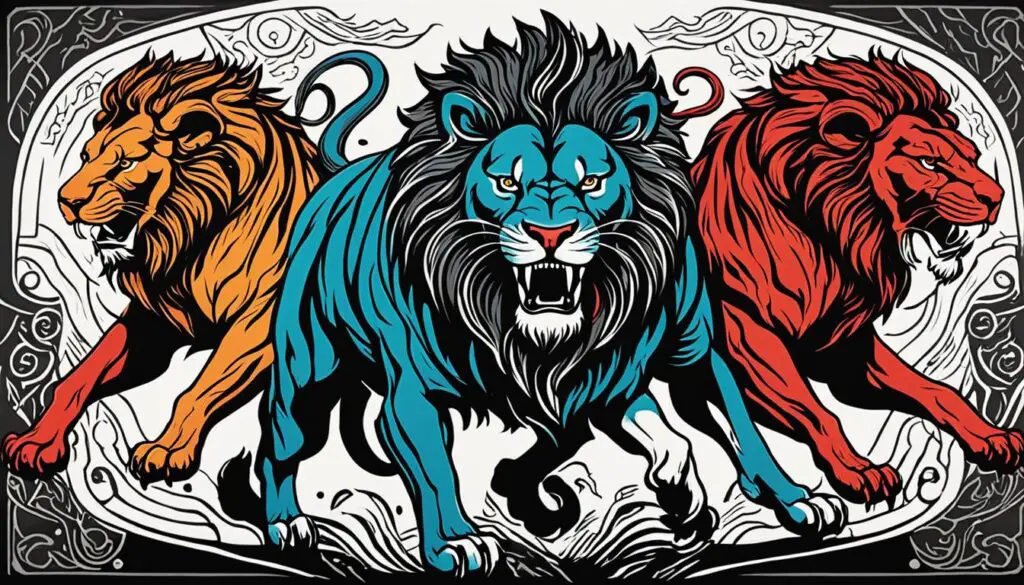
The chimera has long been a subject of fascination and inspiration in various art forms throughout history. It has captivated the imaginations of artists, writers, and audiences alike, leaving a lasting impact on art and literature. From ancient Greek art to modern-day creations, the chimera’s unique anatomy and symbolic significance continue to be explored and depicted.
In ancient Greek art, the chimera often appeared in portrayals of its legendary battle with the hero Bellerophon. These artworks showcased the fearsome creature’s distinctive appearance, with its lion head, goat body, and serpent tail. They emphasized Bellerophon’s bravery and the seemingly insurmountable challenge he faced in defeating the chimera.
During the medieval period, bestiaries depicted the chimera as a creature symbolizing sin, heresy, and the pagan past. These moral and allegorical representations served as cautionary tales, warning against indulging in sinful desires and straying from religious beliefs.
Renaissance artists continued to explore the chimera’s symbolism, taking creative liberties with its portrayal. They experimented with imaginative variations beyond the traditional lion, goat, and snake ingredients, incorporating their own interpretations and visions of the creature.
In modern times, the chimera remains a compelling figure in literature, movies, and video games. It often represents themes of genetic engineering, technology gone wrong, and the dangers of tampering with nature. These contemporary depictions reflect society’s ongoing fascination with the unknown, the power of transformation, and the consequences of human ambition.
Whether it is a classical masterpiece or a modern interpretation, the chimera’s depiction in art and literature continues to captivate and inspire, showcasing the enduring appeal of this mythical creature and its rich symbolism.
The Meaning of Chimera Today
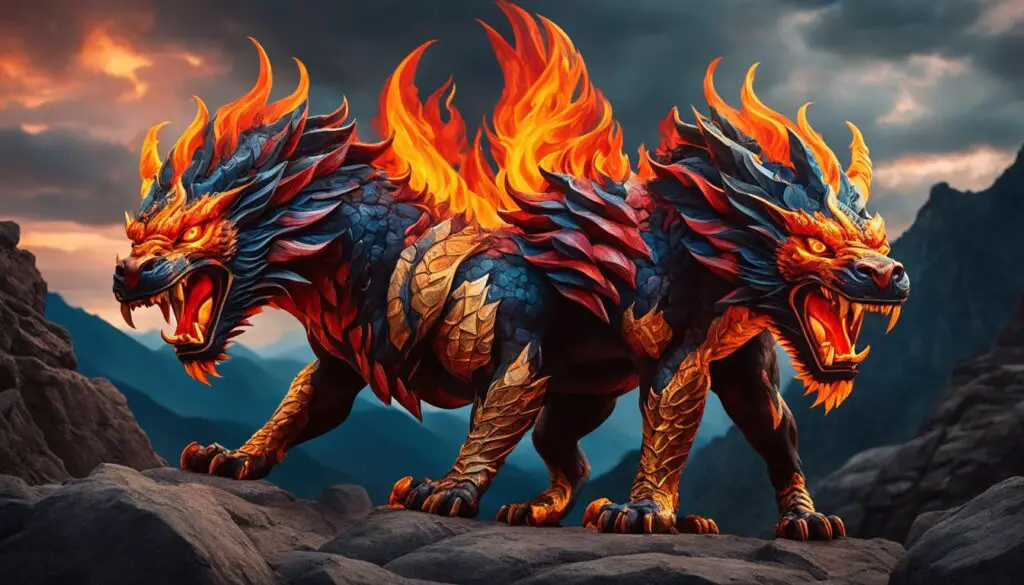
While mythical chimeras are fictional creatures, the term “chimera” has found its way into scientific usage. In biology, a chimera refers to an organism that contains genetically distinct tissues resulting from the fusion of multiple embryos. This usage reflects the lasting impact of the chimera as a symbol for the strange and unfamiliar, as well as the boundaries and consequences of manipulating life. The chimera’s mythological legacy lives on, evoking both our fears and ambitions surrounding genetic modification.
Today, the chimera bears a new meaning in the scientific world. The concept of a biological chimera, where distinct genetic material combines to form one organism, has significant implications in various fields, from stem cell research to organ transplantation. Scientists are exploring the potential of chimeras in growing organs and tissues for transplantation, understanding developmental processes, and advancing our knowledge of genetic diseases.
The image of the mythical chimera continues to inspire and fascinate us, sparking our curiosity about the intricate workings of life and the possibilities that lie within our grasp. Its fusion of different creatures, representing the blending of boundaries, serves as a captivating metaphor for scientific exploration and discovery.
The chimera’s symbolic and scientific significance intertwines, inviting us to ponder the complexities of nature and our role in shaping it. Exploring the realm of chimeras bridges the gap between myth and reality, reminding us that the boundaries between the known and unknown are not so easily defined.
As research in genetics and biotechnology advances, the chimera remains a potent symbol, evoking a mix of fear and fascination. It challenges us to consider the ethical implications of manipulating life, raising questions about the potential consequences of our actions and the need for responsible scientific exploration.
The Enduring Fascination with the Chimera
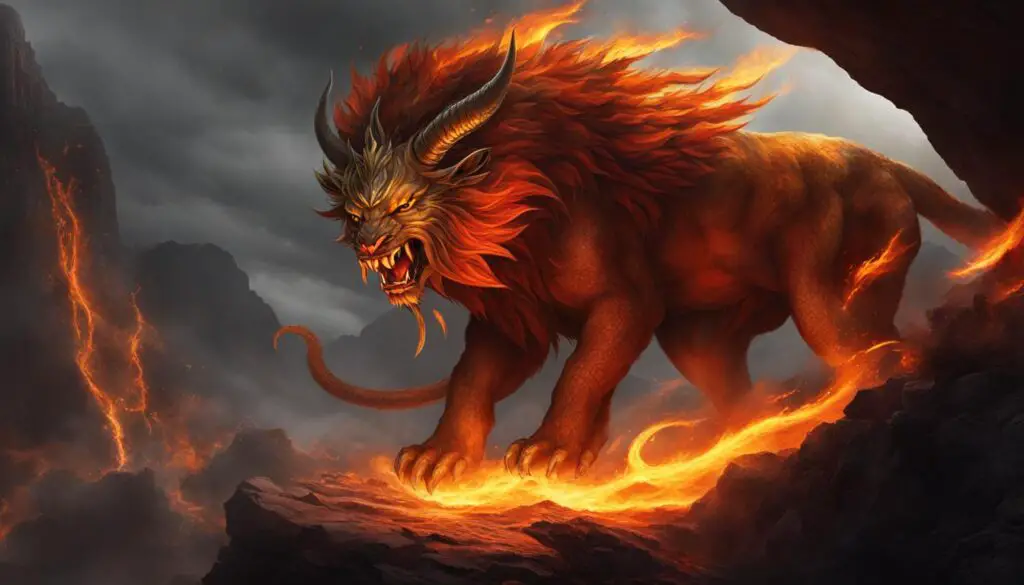
The chimera’s distinctive appearance and symbolic meanings have ensured its enduring fascination throughout history. This mythical creature, with its extraordinary combination of a lion, a goat, and a serpent, continues to captivate artists, writers, and audiences across different mediums.
From ancient literature to contemporary works, the chimera’s image remains prevalent, reflecting humanity’s enduring curiosity and intrigue with the strange, the transgressive, and the unknown. Whether it appears in paintings, sculptures, films, or video games, the chimera’s composite form, blending different animal features, invites us into a world of imagination and wonder.
Artists and writers are drawn to the chimera’s symbolic potential. Its hybrid nature challenges natural boundaries and speaks to our fascination with the mixing of categories. The chimera’s fire-breathing ability, representing destruction and a connection to the underworld, adds another layer of intrigue and mystery to its symbolism.
Throughout history, the chimera has represented themes of bravery, sin, and the consequences of tampering with nature. Modern depictions often explore the dangers of genetic engineering, technology gone wrong, and the blurred lines between human and animal.
The Chimera in Literature
- The chimera’s appearance in ancient Greek literature, such as Homer’s Iliad, showcased its fearsome nature and posed a significant challenge for heroic figures.
- Medieval bestiaries depicted the chimera as a moral lesson, representing sin, heresy, and pagan beliefs.
- In Renaissance literature, the chimera took on imaginative variations beyond the traditional lion, goat, and snake components.
- Modern authors continue to incorporate the chimera into their works, exploring its complex symbolism and its implications for society.
The Chimera in Visual Arts
- Ancient Greek and Roman artworks often depicted the legendary battle between the chimera and heroes like Bellerophon or Hercules.
- Medieval and Renaissance artists portrayed the chimera in religious contexts, symbolizing the triumph of good over evil.
- Contemporary artists explore the chimera’s symbolism in various mediums, from paintings and sculptures to digital art.
With its rich history and metaphorical significance, the chimera continues to be a source of inspiration and fascination for artists and audiences alike. Its enduring presence in art and literature is a testament to our ongoing exploration of boundaries, possibilities, and the mysteries that lie beyond.
Conclusion
The chimera, a fearsome creature from Greek mythology, holds a significant place in our collective imagination. Its unique appearance, combining the features of a lion, a goat, and a serpent, represents the blending of different animals and the crossing of natural boundaries. The chimera’s fire-breathing ability serves as a symbol of destruction, purification, and a connection to the underworld.
Throughout history, the chimera has been a subject of fascination in various forms of art and literature. It embodies themes of bravery, sin, and the dangers of tampering with nature. Artists and writers have explored its allegorical meaning, warning against the consequences of challenging the natural order.
Even today, the chimera continues to captivate our imagination, reflecting our enduring curiosity and unease with the unknown. Its composite form and symbolic significance evoke both our fears and our ambitions, reminding us of the boundaries we navigate and the boundaries we seek to transgress in our quest for knowledge and exploration.
FAQ
What is a chimera in Greek mythology?
In Greek mythology, a chimera is a fearsome female monster that combines the features of a lion, a goat, and a serpent.
What is the meaning of chimera in Greek?
The term “chimera” comes from the Greek word “chimaira,” which means “she-goat” or “one-year-old animal.”
What is the mythological definition of a chimera?
The chimera is a creature in Greek folklore and legends, believed to breathe fire and associated with grave misfortune.
What is the origin of the chimera in Greek mythology?
The origins of the chimera are disputed, with some sources claiming it was raised by a man named Amisodorus, while others say it was the offspring of the half-woman, half-monster Echidna and the monster Typhon.
Where does the chimera appear in ancient Greek literature?
The chimera appears in ancient Greek literature, including Homer’s Iliad, showcasing its fearsome reputation.
What is the symbolism of the chimera in Greek mythology?
The chimera has been associated with themes of untamed wilderness, greed, excess, and sin, representing the consequences of unbridled passion.
How does the chimera appear in different cultures?
The chimera also appears in the myths and folklore of other cultures, such as Mesopotamian mythology, where it represents chaos and darkness.
How is the chimera depicted in art and literature?
The chimera is a popular subject in art and literature throughout history, with ancient Greek depictions showcasing its battle with the hero Bellerophon.
What is the contemporary meaning of the chimera?
The term “chimera” has found its way into scientific usage as an organism with genetically distinct tissues resulting from the fusion of multiple embryos.
Why does the chimera continue to fascinate people today?
The chimera’s unique appearance, symbolism, and allegorical meanings continue to captivate our imagination, reflecting our enduring curiosity and unease with the unknown.


